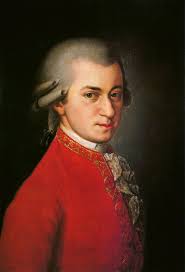Wolfgang Amadeus Mozart’s Horn Concerto No. 4 in E-flat major, K. 495 is one of the most celebrated compositions for the instrument. Completed in 1786, this concerto was written for the virtuoso horn player Joseph Leutgeb, a close friend of Mozart and a frequent recipient of his compositions. The work is admired for its lyrical melodies, technical brilliance, and the playful relationship between the solo horn and the orchestra.
Background and Context
Mozart composed a total of four horn concertos, all intended for Joseph Leutgeb, who was renowned for his exceptional skill on the natural horn. These concertos, written between 1783 and 1791, showcase the evolving capabilities of the instrument and Mozart’s deep understanding of its tonal beauty.
At the time, the horn was undergoing significant development, though it was still limited by the absence of modern valves. Despite these limitations, Leutgeb’s mastery allowed him to perform demanding passages that took advantage of the natural horn’s unique harmonic capabilities. Mozart, known for his humor and camaraderie, even wrote teasing remarks in Leutgeb’s manuscript, showing the lighthearted friendship between the composer and the performer.
Composition and Structure
Horn Concerto No. 4 follows the traditional three-movement concerto format:
- Allegro moderato – The first movement opens with a bright and majestic orchestral introduction before the horn takes center stage with fluid, heroic themes. This movement highlights the instrument’s lyrical and virtuosic potential, filled with dynamic contrasts and rapid passages.
- Romanza (Andante) – The second movement is a tender and expressive section, where the horn sings with a warm, vocal-like quality. This movement is often seen as the emotional heart of the concerto, emphasizing Mozart’s gift for melody.
- Rondo (Allegro vivace) – The final movement is a lively and playful rondo, characterized by a memorable, dance-like main theme. It demands agility and control from the soloist, featuring quick arpeggios and spirited leaps that showcase the horn’s full range.
Performance and Legacy
The Horn Concerto No. 4 remains a cornerstone of the horn repertoire and is frequently performed by both aspiring and professional horn players. Its combination of technical challenges and expressive beauty makes it a favorite in concert halls worldwide.
Notable interpreters of the concerto include legendary horn players such as Dennis Brain, Barry Tuckwell, and Hermann Baumann, each bringing their own style to the piece. Modern performances often use the valved horn, but some musicians still perform it on the natural horn to recreate the original sound Mozart envisioned.
Conclusion
Mozart’s Horn Concerto No. 4 stands as a testament to his ability to write idiomatically for the horn while infusing his compositions with charm, wit, and technical brilliance. It remains an essential work in both the horn and classical music repertoire, delighting audiences just as it did over two centuries ago. Whether played on a period instrument or a modern valved horn, this concerto continues to captivate listeners and challenge musicians with its enduring beauty and artistry.


Comments are closed